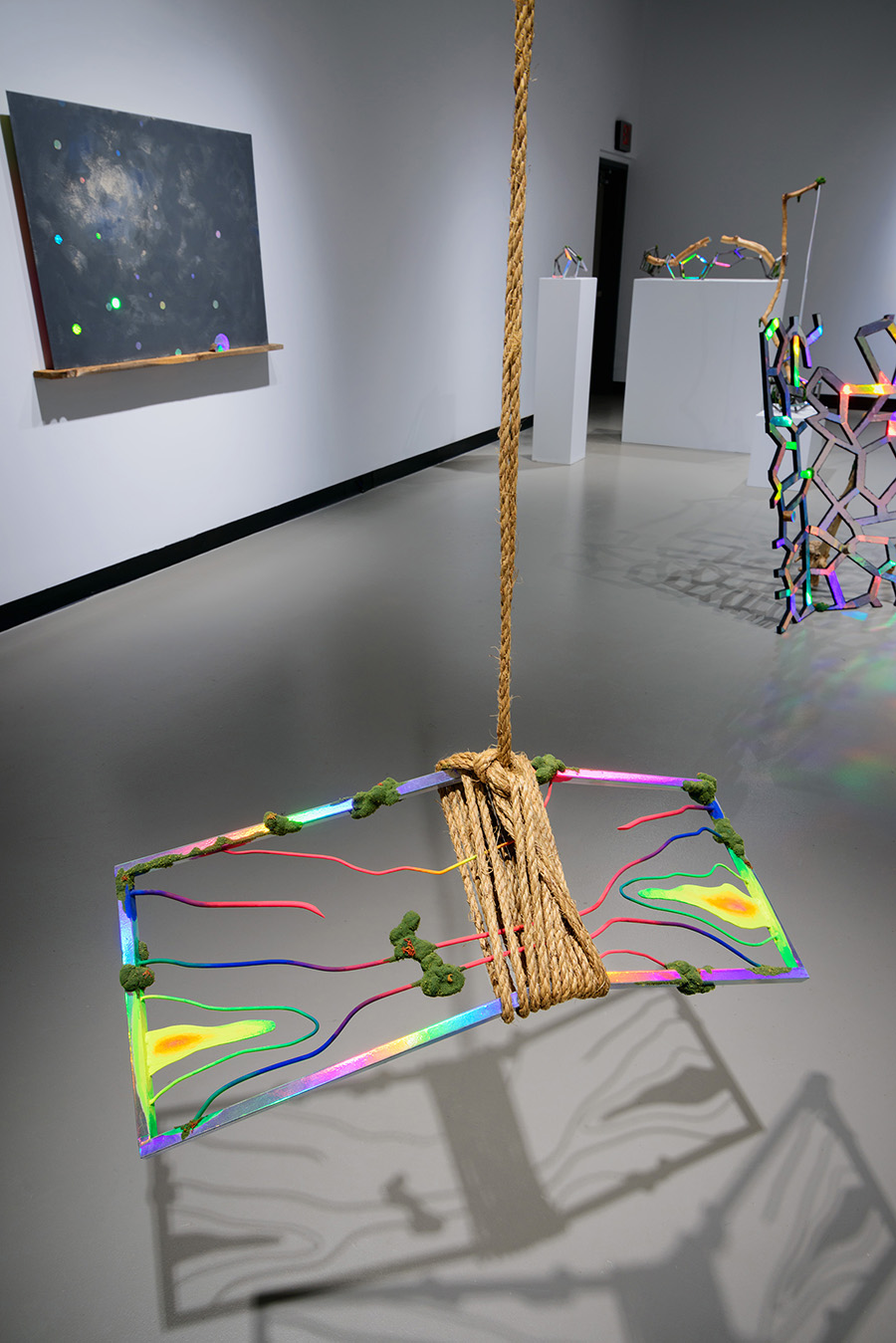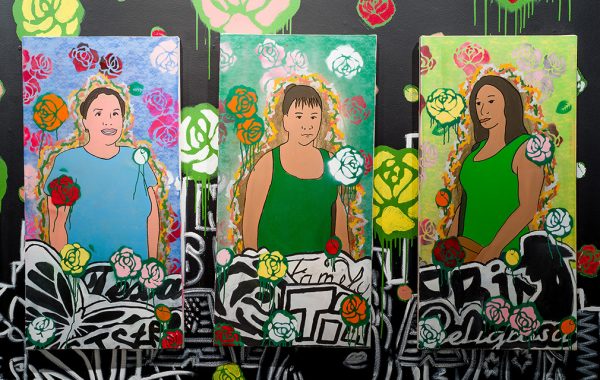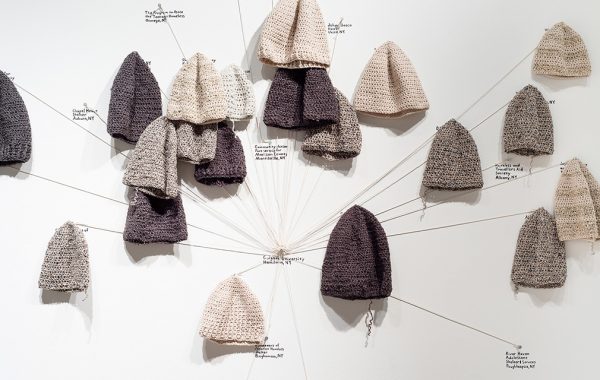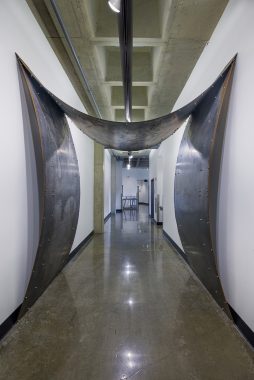Good intentions
When filmmaker Joe Berlinger ’83 appeared at the Tribeca Film Festival on April 25 for the premiere of his latest documentary, Intent to Destroy, he had another member of the Colgate community by his side: English and humanities professor Peter Balakian, whose class Berlinger had taken years ago. Intent to Destroy takes a close look at the Armenian Genocide and the Turkish government’s continued denial of it. Balakian appears frequently in the film to provide commentary on the genocide’s historical context and the way stories about it have evolved over time.
The film marks a departure from Berlinger’s usual style of documentary filmmaking, where he chronicles events as they unfold in real time, such as in Brother’s Keeper, about an alleged murder in rural New York, and the Paradise Lost trilogy, about three men wrongfully convicted of murder. However, Intent to Destroy still adheres to Berlinger’s core purpose.
“My intention as a filmmaker has always been to seek the truth, especially in circumstances that risk distorting or silencing it,” said Berlinger. “Throughout my career, I have used my camera to give a voice to the voiceless — whether it be those caught in an unforgiving judicial system or fighting to be heard from deep within the U.S. penal system — and I hope to bring this same force to Armenians worldwide.”
Berlinger developed the idea for Intent to Destroy when he heard about director Terry George’s latest film, The Promise, which was in production at the time. The Promise — starring Oscar Isaac, Christian Bale, and Charlotte Le Bon — is an epic love story that unfolds in the midst of the Armenian Genocide.
Berlinger realized that The Promise was the perfect way to connect the Armenian Genocide to the present. He received permission to embed himself and his crew into the set of George’s film so that he could make a documentary that not only examined the historical and political aspects of the Armenian Genocide, but also considered the challenges faced by people trying to tell these stories today.
“I finally felt there was an interesting way to create a documentary about the subject that would add something new to the existing films already out there,” said Berlinger.
He sought to feature a diverse mix of scholars, historians, and filmmakers in the documentary. Serendipitously, Berlinger’s former professor — Balakian — published one of the most seminal books on the Armenian Genocide. What’s more, Balakian’s writing provided some of the inspiration for The Promise’s script, although the professor didn’t know it at the time.
“To be able to collaborate with Peter — with his vast knowledge and personal connection to this subject matter — was an exceptional opportunity,” Berlinger said.
Balakian has previously appeared in a number of other documentaries, including PBS’s 2006 film Armenian Genocide, but working with Berlinger was especially exciting.
“It’s always great to see former students go on to be wonderful, successful, creative artists,” Balakian said. “Joe is a superb artist, and this is a very important film. He did an extremely fine job creating a complex narrative.”
Intent to Destroy played on the film festival circuit throughout the summer and will have a limited release in theaters this fall. For updates, check http://joeberlingerfilms.com.
— Meredith Dowling ’17
(Image above shows Joe Berlinger ’83 [far left] filming his documentary Intent to Destroy. Photo by Timothy Grajek)
Seeing Through.
Art is always subjective, based on the viewer’s perspective. But visitors to the spring exhibition Through. by David Shaw ’87 also experienced each sculpture differently depending on their literal vantage point. As visitors moved through Clifford Gallery, the sculptures changed colors as the lights hit the holographic material from different angles.
“It’s like a poor man’s kinetics,” Shaw said. “You’re the motor that drives this thing, and your understanding of the piece is based on your perspective.”
Sculpture titles like Railing and Bent connote the exhibition theme, which Shaw described as “moving through the surface of something or through some passage, whether that’s temporal, emotional, or physical.” He added: “Like railing at the world — there’s anger … and there are passages through.” Bent is one in a series of what Shaw calls his Hang-ups — both because they are suspended and also because of the implied joke indicating a preoccupation or fixation. Meanwhile, he likened his piece Net to “a neural net or synaptic net — brain space.”
When the artist discusses his work, there are hints of the college student who concentrated on psychology until the end of his junior year. Shaw was planning to attend medical school and become a surgeon, but had second thoughts. “I realized my interest in all of the science and the neurochemistry tended to be conceptual,” Shaw said. He’d always expressed his creativity, and the art department professors opened their arms to him.
In the exhibition, pentagonal shapes and what Shaw calls “atomic, synaptic chunks” displayed his fascination with the intersection of science and consciousness, technology and nature.
Through. was a survey of Shaw’s work but it also included two pieces — Net and Railing — that he built at Colgate for this exhibition. The Brooklyn-based artist worked on the pieces from January of this year until the opening in March.
Shaw characterized his works as his unconscious way of addressing “some rather dramatic moments in my life,” he said. “This exhibition demonstrated that, even under incredible pressure, and seemingly impossible hardship, the only way out is through.”
For more on Shaw and the exhibition, watch colgate.edu/david-shaw.
Colgate Alumni Collect
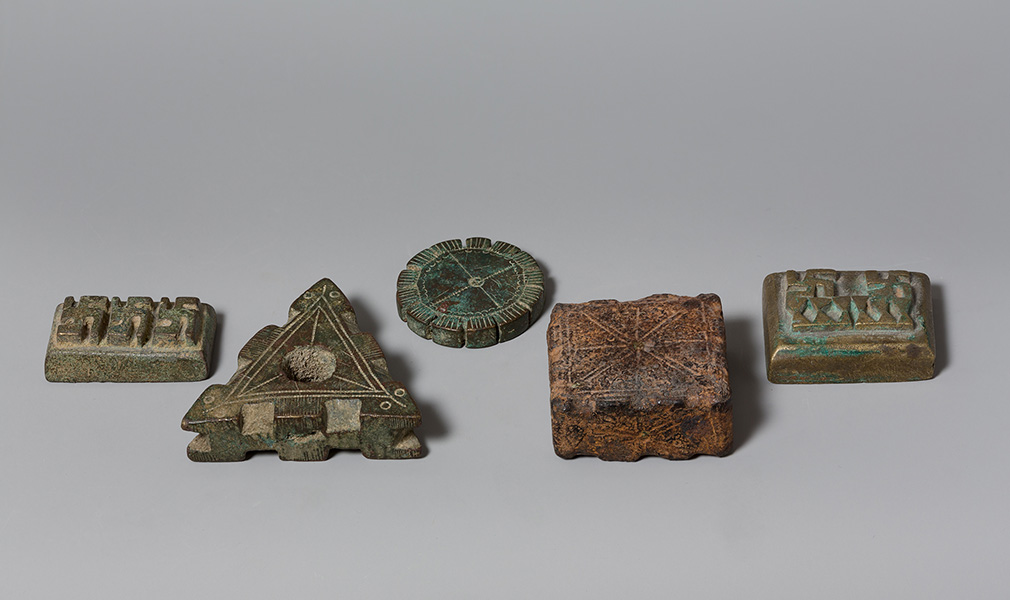
Five Royal Goldweights, Ghana, ca. 16th–18th century. Brass, dimensions vary.
Photo by Eileen Travell. Collection of Paul Jacobs ’67.
A British iPad drawing, a beaded Cameroonian sculpture, a battle helmet turned lyre, and an Impressionist oil painting may all seem worlds apart, but these works have come together in Hamilton, N.Y. They’re four of many pieces on display in the Picker Art Gallery’s exhibition Colgate Alumni Collect, which merges the artistic mind-sets of four alumni who collect artwork from around the globe.
Paul Jacobs ’67, Rick Stone ’81, Oscar Seikaly ’83, and Anne Huntington ’07 lent pieces from their private collections for the exhibition, which was on view through June. The works range from tribal antiquities, like the Ghanaian goldweights of Jacobs’s collection (above), to modern mixed-media pieces (below) from Seikaly’s selections.
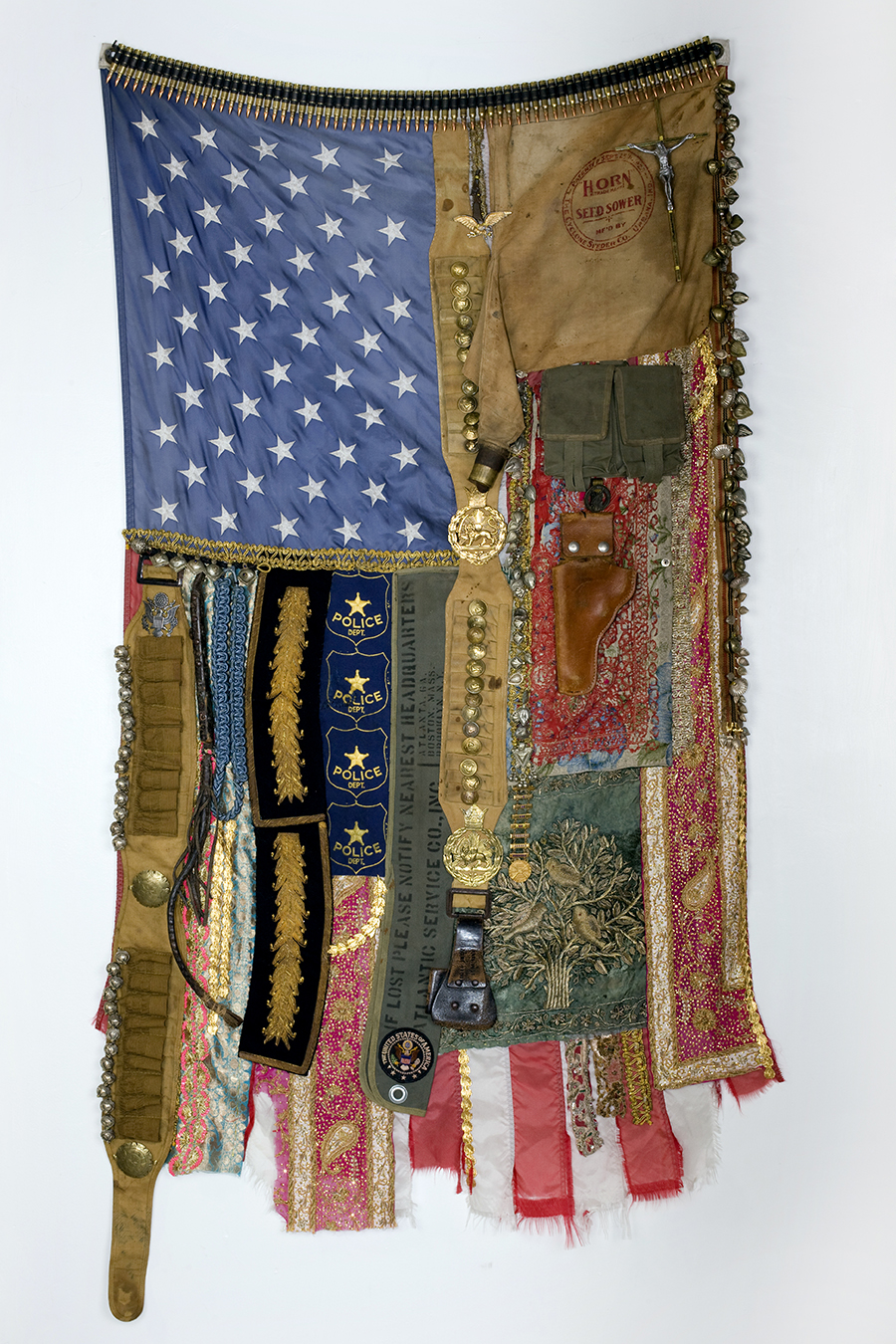
Sara Rahbar (American, born Iran, 1976), Flag #49: A Time of Anxiety, from the series Flags, 2010. Mixed media, 65 × 35 in (165 × 89 cm). Private collection of Oscar ’83 and Carole Seikaly, Miami, Fla. © Sara Rahbar, courtesy of Carbon 12 and the artist.
“We wanted to highlight that these collectors all have Colgate in common, and yet the art that they’ve collected is from around the world,” said Natalie Ramirez ’19.
She, along with Natalie Bryt ’17, Kally Mott ’17, and Julia Wolf ’17, curated the exhibition by interviewing the collectors, writing the catalogue, and carefully selecting pieces for the show.
“This project offered our students the opportunity to be mentored by professionals in the field to learn about the museum profession and to engage directly with alumni collectors and their works,” said Anja Chávez, director of university museums.
After Bryt, Mott, and Wolf graduated in May, Ramirez stayed on campus to perfect the finishing touches of the exhibition, including the final layout of the pieces. Ramirez explained that they organized the art by collector, so that each section represented each alumnus’s or alumna’s style.
Stone, who lent some of his American Impressionist paintings and contributed financial support to the exhibition, said: “You really see how people have completely and utterly different tastes in art, and that’s OK. The part of life that you learn after graduating college is expressing yourself.”
— Erin Burnett ’19
A selection of senior art projects
The Roses that Grew from the Concrete
Acrylic paint and spray paint on canvas with accompanying wall mural
“The Roses that Grew from the Concrete is a series of eight portraits and accompanying wall art highlighting and celebrating where I come from. I grew up in a neighborhood that was surrounded by family, drugs, love, violence, graffiti, concrete, and flowers, and it is the culmination of both the beautiful and the ‘unbeautiful’ that inspired this project. I created portraits of the women in my family who live in the neighborhood I grew up in. These women represent resilience and power in a place that is not conducive to their survival. I symbolically associate their image with the white rose bush that grew outside my house despite the Texas heat and lack of watering. I juxtapose their images with grafitti-esque wall art to highlight their beauty and their strength despite what is around them.”
— Bennie Guzman ’17
Casting Off
Reclaimed yarn, paper, ink, cardboard
“Queer youth are disproportionately represented in the homeless population, and shelters often lack the resources and knowledge to support these individuals. I am taking discarded clothing and altering its lifecycle to serve the discarded LGBTQ homeless youth population. Both subjects are neglected by the general public, but I transform one to serve the other in a very practical sense, giving the old clothing new purpose. Hats denote comfort and care, but may also be used as tools for protection when living without a home. Each shelter will receive a hat in a box containing various resources on how to help queer youth.”
— Kris Pfister ’17
Adversaries: General sensibilities
Steel sheets, 120 x 60 inches each
“Space is never neutral. Adversaries works to expose the way in which we have become accustomed to certain spaces through the addition of simple configurations of industrial materials. I select spaces outside of the traditional gallery in order to force viewers to confront the object and renegotiate their surroundings. These installations aim to reshape the intersections between viewer, material, architecture, and space. The viewers become actors in relation to the piece, not only becoming conscious of their own position within the space, but also their position in relation to the work and their perception of its construction and material.”
— Daniel M. Berry ’17


